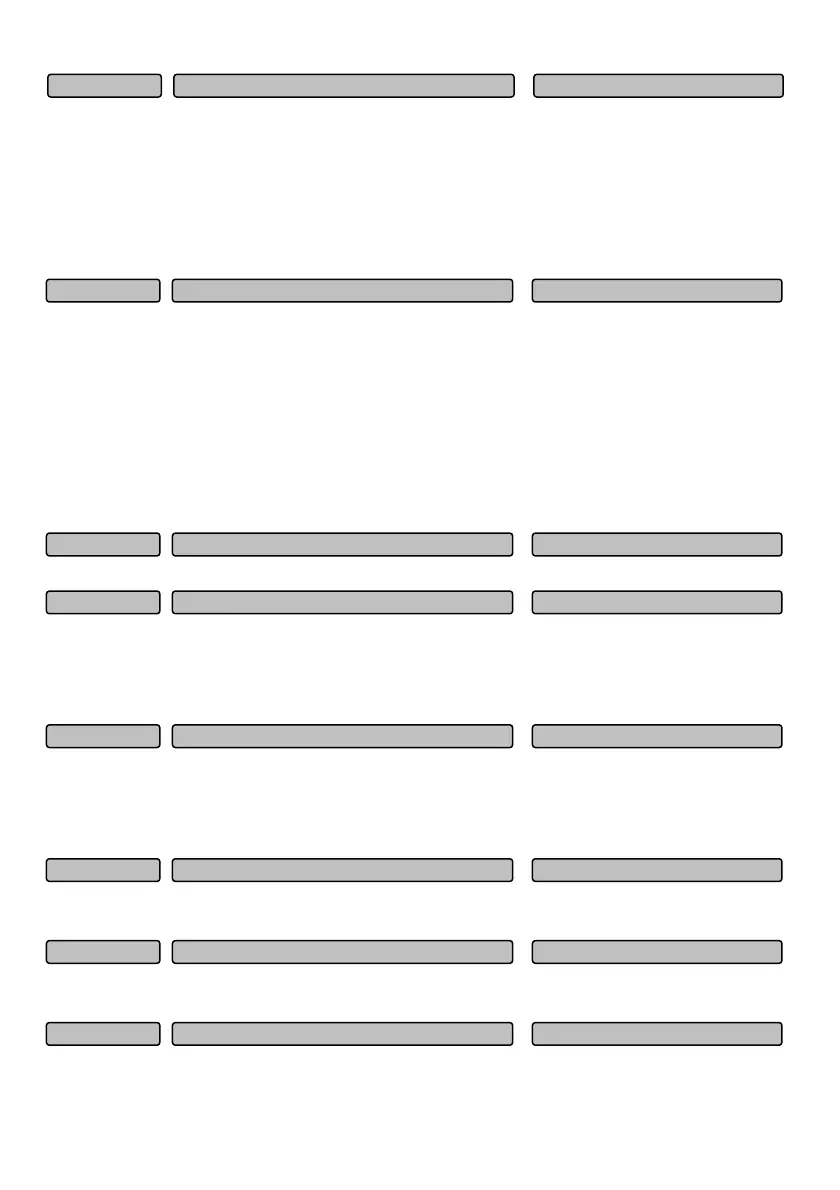210
0: P14.02 digital reference
1: AI1 analog reference
2: AI2 analog reference
3: AI3 analog reference
4: Terminal PULSE reference
5: Serial port communication reference
0: AI1 analog feedback
1: AI2 analog feedback
2: AI3 analog feedback
3: Terminal PULSE feedback
4: AI1 + AI2
5: AI1 – AI2
6: Min{AI1, AI2}
7: Max{AI1, AI2}
This value can be set via the operation panel or the serial port.
The PID command acceleration / deceleration is the soft start function to increase or decrease the PID
target value by the set acceleration / deceleration time.
The set time refers to the required time adding from 0.0% command to 100.0% command or the time
decreasing from 100.0% command to 0.0% command.
0: Positive action. When the reference increases, it shall be used when the motor is required to increase
its rotating speed.
1: Negative action. When the reference increases, it shall be used when the motor is required to
decrease its rotating speed.
The larger Kp is, the quicker response becomes, but too large Kp may easily cause oscillation and the
steady-sate error cannot be eliminated by using Kp control only.
The main functions of Ki lie in eliminating steady-state deviation and making the feedback value
consistent with the target value. Too large Ki may easily cause overshoot and oscillation.
Kd is used for improving the response performance of the system, but too large configuration may easily
cause oscillation.
Differential
ain K
0.000~10.000
0.000
P14.07
Inte
ral
ain Ki 0.000~10.000
0.008
P14.06
Pro
ortional
ain K
0.000~10.000
0.500
P14.05
PID ad
ustment feature selection 0~1
0
P14.04
PID command acceleration/deceleration time 0~3600.0s
0.0s
P14.03
PID di
ital reference -100.0~100.0%
0.0%
P14.02
Feedback channel selection 0~7
0
P14.01
Reference channel selection 0~5
0
P14.00
